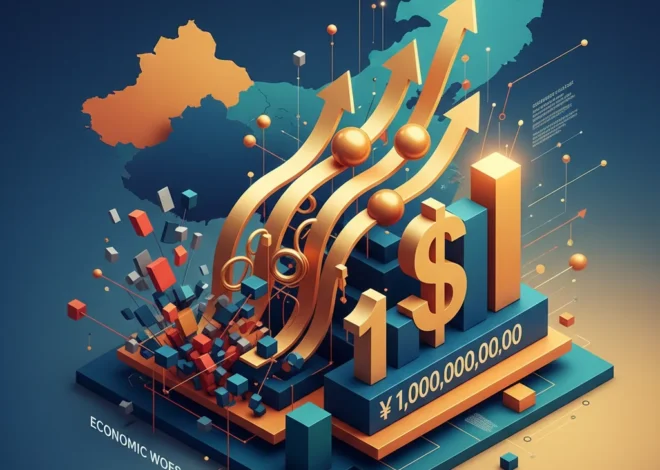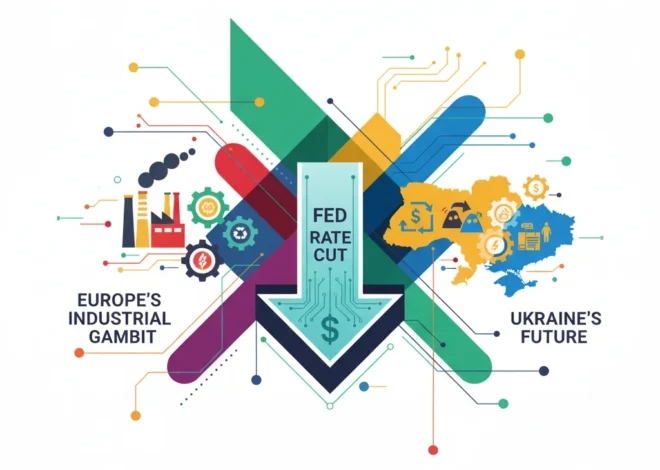High-Stakes Handshake: Decoding the Trump-Xi Summit and Its Impact on the Global Economy
In the world of international relations and global finance, few events carry the weight of a face-to-face meeting between the leaders of the world’s two largest economies. When those leaders are Donald Trump and Xi Jinping, and the backdrop is an escalating trade war, a simple handshake can send shockwaves through the global stock market. The G20 summit stage was set not just for diplomatic pleasantries, but for a high-stakes negotiation that held the potential to either calm turbulent economic waters or unleash a new storm of uncertainty for investors, corporations, and the entire global economy.
The tension was palpable. For months, the United States and China had been locked in a tit-for-tat tariff battle, disrupting supply chains, rattling investor confidence, and forcing a slowdown in global growth. The core question on every analyst’s mind was whether this meeting would produce a breakthrough, a breakdown, or simply kick the can further down a very long and precarious road. Understanding the dynamics at play is crucial for anyone involved in investing, finance, or international business.
The Anatomy of a Trade War: How We Reached the Brink
The path to this critical juncture was paved with escalating tariffs and increasingly sharp rhetoric. The Trump administration initiated the conflict, citing long-standing grievances over China’s trade practices. The primary complaints centered on issues that strike at the heart of modern economics and innovation: intellectual property theft, forced technology transfer from U.S. companies, and a massive trade deficit.
In response to what it deemed unfair practices, the U.S. imposed tariffs on hundreds of billions of dollars worth of Chinese goods. China, in turn, retaliated with its own levies on American products. The situation reached a fever pitch just before the summit when talks broke down, and President Trump threatened to impose tariffs on an additional $300 billion of Chinese imports, a move that would have effectively taxed all goods coming from China. This threat cast a long shadow over the global markets, making the Trump-Xi meeting a make-or-break moment.
The Core Points of Contention
To fully grasp the stakes, it’s essential to break down the key issues that formed the fault lines of the negotiation. These were not simple disagreements over numbers; they represented a fundamental clash of economic models and geopolitical ambitions.
| Issue | U.S. Position | China’s Position |
|---|---|---|
| Tariffs | Leverage to force structural changes in China’s economy. The U.S. wanted China to agree to a deal before removing existing tariffs. | Unilateral and protectionist. Beijing demanded the removal of all tariffs as a precondition for any comprehensive agreement. |
| Intellectual Property (IP) | China must end state-sponsored IP theft and create enforceable protections for American companies. | Acknowledges the need for IP protection but rejects U.S. accusations as exaggerated and politically motivated. |
| Technology & Huawei | Companies like Huawei pose a national security risk and are instruments of the state. The U.S. placed Huawei on an “entity list,” restricting its access to American technology. | The Huawei ban is a protectionist move to stifle a successful Chinese competitor in the critical race for 5G and financial technology infrastructure. |
| Structural Reforms | China must reduce subsidies for state-owned enterprises and open its markets to fair competition. | Considers these demands an infringement on its national sovereignty and its right to pursue its own economic development model. |
Navigating the Potential Outcomes: From Truce to Turmoil
Financial markets were braced for several potential scenarios, each with vastly different implications for global trading and investment strategies. The outcome would set the tone for the international economic landscape for months, if not years, to come.
Scenario 1: The Optimistic Outcome (A Truce)
The most hoped-for result was an agreement to stand down. In this scenario, President Trump would agree to hold off on the threatened $300 billion in new tariffs, and both sides would commit to resuming formal negotiations. This was seen as the “de-escalation” path. For the stock market, this would trigger a significant relief rally, as the immediate threat of a full-blown trade war receded. The optimists believed this could pave the way for a more substantive deal down the line, restoring a degree of stability to the global economy.
Scenario 2: The Pessimistic Outcome (A Breakdown)
The worst-case scenario was a complete failure of the talks. An acrimonious meeting could have led President Trump to immediately move forward with the new tariffs. Such a move would have been a massive shock to the system, likely triggering a sharp sell-off in equity markets, disrupting supply chains further, and potentially tipping fragile economies into recession. Central banking institutions worldwide would have been forced to consider more aggressive stimulus measures to counteract the economic damage.
Scenario 3: The Realistic Outcome (Kicking the Can)
This outcome, which ultimately transpired, was a version of the truce. The leaders agreed to restart talks, and the U.S. held off on new tariffs. However, no fundamental issues were resolved. The existing tariffs remained in place, and the deep-seated disagreements over technology and structural reforms were left for future negotiations. While this averted immediate disaster, it also ensured that uncertainty would remain a dominant theme for investors. The underlying tensions were merely papered over, not resolved. As analysts pointed out, this meant the threat of re-escalation would continue to loom over the markets.
Beyond the Bonus: A Banker's Reunion and the Great Life Audit of Post-Finance Careers
Beyond Tariffs: The Long-Term Implications for Finance and Technology
It’s a mistake to view this conflict solely through the lens of trade deficits and tariffs. At its core, this is a struggle for technological and economic supremacy in the 21st century. The battle over Huawei is a clear indicator of this deeper rivalry. The U.S. fears that Chinese dominance in 5G—the backbone of the next generation of digital infrastructure—could have profound national security and economic consequences.
This tech cold war has significant implications for the future of finance. As geopolitical blocs begin to form around U.S. and Chinese technology standards, we could see a fragmentation of the global digital economy. This could accelerate the development of alternative financial systems. For instance, the strategic rivalry could spur nations to reduce their reliance on the U.S. dollar-denominated payment system, potentially creating new opportunities for fintech innovation and even exploring state-backed digital currencies or blockchain-based settlement networks as tools of economic statecraft.
For business leaders and those focused on investing, this means adapting to a new reality. The era of frictionless globalization is giving way to a more complex environment where supply chains must be diversified, and geopolitical risk must be a core component of any long-term strategy. The U.S.-China relationship will remain the single most important driver of global economic and market trends for the foreseeable future.
China's Tech Dragon Wakes: Inside the New 5-Year Plan Shaping the Global Economy
Conclusion: A Fragile Peace in an Era of Competition
The Trump-Xi meeting at the G20 was a pivotal moment that successfully pulled the global economy back from the brink of a much deeper crisis. It replaced the fear of immediate escalation with the familiar comfort of prolonged uncertainty. While the markets breathed a sigh of relief, the fundamental issues driving the conflict remain unresolved. The truce achieved was fragile, and the path forward is fraught with challenges.
For investors, finance professionals, and business leaders, the key takeaway is that volatility driven by geopolitics is the new normal. The strategic competition between the U.S. and China is a secular trend that will continue to shape economics, technology, and global markets for decades. Navigating this landscape requires not just reacting to headlines, but understanding the deep structural forces at play and building resilient, adaptable strategies for a world in flux.


